Tag: Bodybuilding

Get Bigger Arms With This Simple Workout
Sleeve-Splitting Arm Workout
The idea of having big arms push many of us to get a gym membership. Huge arms have been associated with machoism for a long time. Ask a kid to flex his muscles, and he’ll most probably hit you with a front double bicep.
You need to pay equal attention to your biceps and triceps. You can’t go crazy with your bicep workouts while overlooking your triceps development. Muscle symmetry is important for strength and aesthetic purposes.
Some people hurt their gains by training their arms every single day. Training your arms every day won’t get you bigger arms. Doing this leads to overtraining since your muscles need time to recover and grow after a workout.
Many people train their biceps before their triceps on the arms day. This can lead to weak triceps since you might be exhausted by the time you start your triceps workout.
This can happen for any muscle you train second on a multi-muscle training day. To combat this in your arm workouts, you will be doing antagonistic supersets. In this advanced training technique, you superset different muscle groups in a single set. For, e.g., – you will be super-setting your biceps with your triceps. Follow this workout to get bigger arms.
Superset 1
Standing Cable Bicep Curls – 3 Sets 15 Reps
You would be starting with a cable exercise to pre-exhaust your muscles. This will help you get the same pump later in your workout while using relatively light weights. Use a straight bar attachment for this exercise.
Overhead Rope Cable Tricep Extension – 3 Sets 15 Reps
Your triceps consist of three heads; medial, long and lateral. You need to train all three to ensure an overall development. The overhead rope cable extensions target your long head. Using cables will help you maintain tensions on your triceps throughout the movement.
Superset 2
Dumbbell Curls – 3 Sets 15 Reps
Dumbbell curls is an incredibly effective exercise to target your biceps. In this exercise, rotate your hands outwards at the top of the movement. This will help in building the peak in your pythons.
Close Grip Bench Press – 3 Sets 15 Reps
Doing a compound exercise (multiple joints) can help build size and strength in your target muscle group. Close grip bench press helps with the overall development of your triceps. Make sure you have a complete range of motion while performing this exercise.
Superset 3
Concentration Curls – 3 Sets 15 Reps
It is always more effective to end your bicep workouts with an isolation exercise. Concentration curls were one of Arnold’s favorite exercise. This exercise helped him turn his biceps into mountain peaks. You need to maintain a mind-muscle connection throughout this exercise. Going through the motion won’t get you anywhere.
Tricep Dips – 3 Sets 15 Reps
Doing dips at the end of your workout can test what you’re made of. If body weight dips are too easy for you, feel free to add resistance bands or resistance using weights. Maintain a full range of motion and squeeze your triceps at the top of the movement to get the most of this exercise.
Which is your favorite triceps exercise? Let us know in the comments below. Also, be sure to follow Generation Iron on Facebook and Twitter.
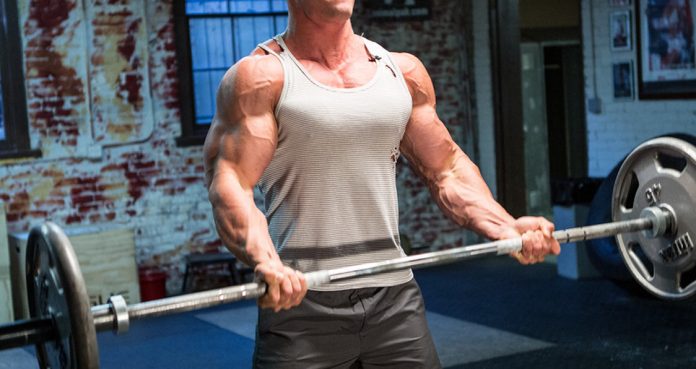
Get Bigger Arms With This Simple Workout
Sleeve-Splitting Arm Workout
The idea of having big arms push many of us to get a gym membership. Huge arms have been associated with machoism for a long time. Ask a kid to flex his muscles, and he’ll most probably hit you with a front double bicep.
You need to pay equal attention to your biceps and triceps. You can’t go crazy with your bicep workouts while overlooking your triceps development. Muscle symmetry is important for strength and aesthetic purposes.
Some people hurt their gains by training their arms every single day. Training your arms every day won’t get you bigger arms. Doing this leads to overtraining since your muscles need time to recover and grow after a workout.
Many people train their biceps before their triceps on the arms day. This can lead to weak triceps since you might be exhausted by the time you start your triceps workout.
This can happen for any muscle you train second on a multi-muscle training day. To combat this in your arm workouts, you will be doing antagonistic supersets. In this advanced training technique, you superset different muscle groups in a single set. For, e.g., – you will be super-setting your biceps with your triceps. Follow this workout to get bigger arms.
Superset 1
Standing Cable Bicep Curls – 3 Sets 15 Reps
You would be starting with a cable exercise to pre-exhaust your muscles. This will help you get the same pump later in your workout while using relatively light weights. Use a straight bar attachment for this exercise.
Overhead Rope Cable Tricep Extension – 3 Sets 15 Reps
Your triceps consist of three heads; medial, long and lateral. You need to train all three to ensure an overall development. The overhead rope cable extensions target your long head. Using cables will help you maintain tensions on your triceps throughout the movement.
Superset 2
Dumbbell Curls – 3 Sets 15 Reps
Dumbbell curls is an incredibly effective exercise to target your biceps. In this exercise, rotate your hands outwards at the top of the movement. This will help in building the peak in your pythons.
Close Grip Bench Press – 3 Sets 15 Reps
Doing a compound exercise (multiple joints) can help build size and strength in your target muscle group. Close grip bench press helps with the overall development of your triceps. Make sure you have a complete range of motion while performing this exercise.
Superset 3
Concentration Curls – 3 Sets 15 Reps
It is always more effective to end your bicep workouts with an isolation exercise. Concentration curls were one of Arnold’s favorite exercise. This exercise helped him turn his biceps into mountain peaks. You need to maintain a mind-muscle connection throughout this exercise. Going through the motion won’t get you anywhere.
Tricep Dips – 3 Sets 15 Reps
Doing dips at the end of your workout can test what you’re made of. If body weight dips are too easy for you, feel free to add resistance bands or resistance using weights. Maintain a full range of motion and squeeze your triceps at the top of the movement to get the most of this exercise.
Which is your favorite triceps exercise? Let us know in the comments below. Also, be sure to follow Generation Iron on Facebook and Twitter.
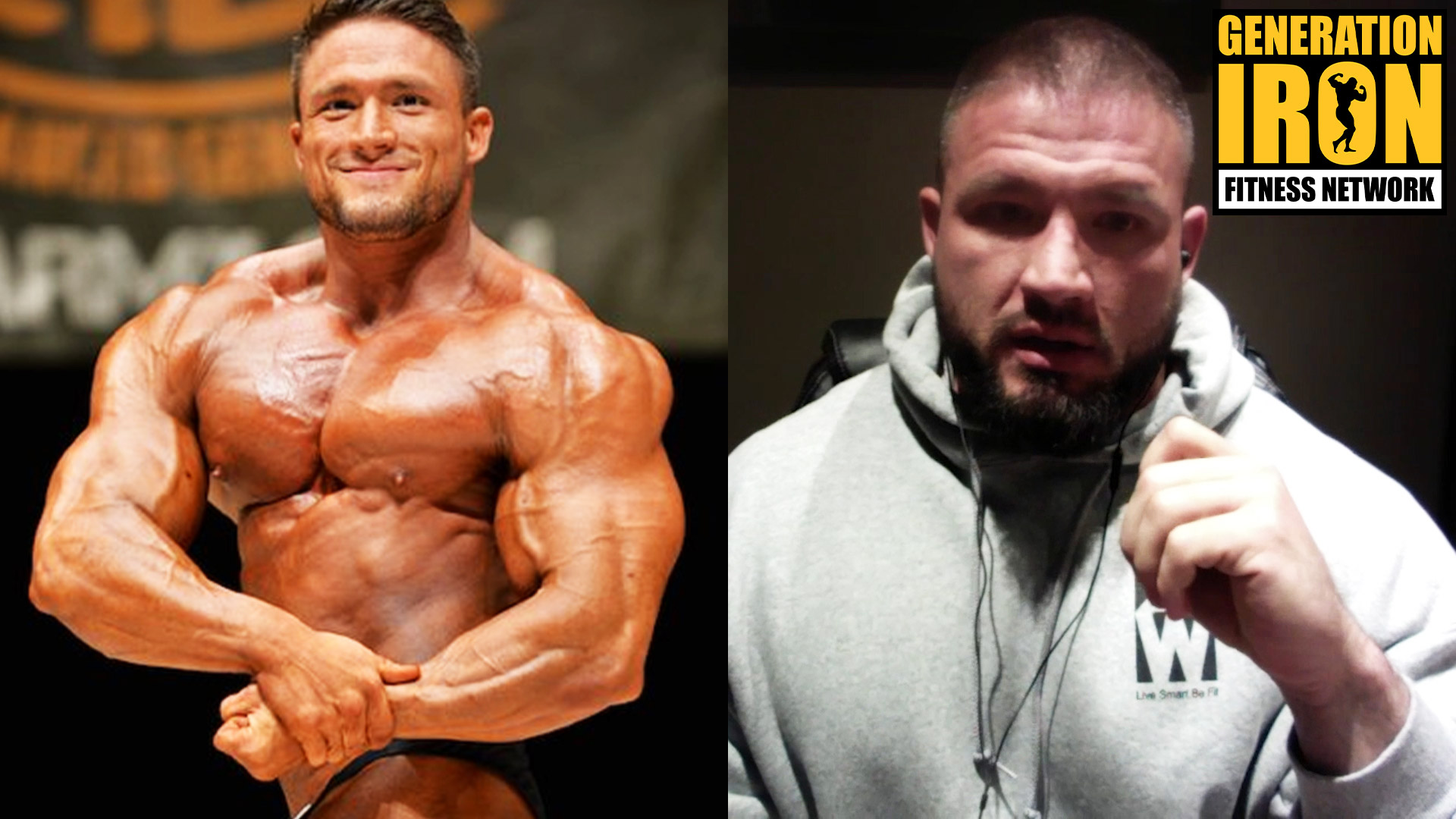
Zane Watson: I Can’t Be Perfect At Men’s 212 Weight
[embedded content]
Zane Watson looks to the future of his career and potentially moving up to the Men’s Open division.
One very interesting thing about Zane Watson is how completely candid and honest he is about his own bodybuilding physique and progress. He’s not a blunt controversial talker – but he will plainly talk about his own deficiencies vs his successes. For example, in our previous segment he was very open about life being more than just bodybuilding 24/7 – despite his desire to be a champion competitor. That’s rare for athletes looking to be the best.
So when it comes to his career in Men’s 212 – he is once again directly honest about his current situation. He is on the edge between divisions – unsure if he wants to go all in on Men’s Open or continue with Men’s 212. It all comes down to his weight. In our latest GI Exclusive interview, Zane Watson explains how dropping down to 212 pounds hurts his physique – and his thoughts on moving up to Men’s Open.
As Zane Watson has aged, he’s found it harder to come in naturally under 212 pounds. This is required in order for him to compete in the Men’s 212 division. It’s natural for athletes in this category to bulk up and then cut down to make weight. But Watson is coming to the realization that he physically can’t bring his weight down without sacrificing the quality of his physique. On the other hand, he ideally would sit right at 225 pounds to pull of his perfect physique. This is also on the lighter side for Men’s Open – where athletes typically land around 250 pounds or higher.
“I’m in a really weird spot,” Zane Watson stats plainly in our interview. He continues:
“I don’t think I have more to accomplish in 212 just because I can’t be perfect at that weight. I’m 222 pounds with 5% body fat. And for me to pull 12 pounds from that, 10 pounds from that, it hurts my look.”
Ultimately, this strange spot doesn’t concern Zane Watson much. He’s looking ahead at the possibility of competing in Men’s Open. He’s applied for the Arnold Classic this year. This competition doesn’t hold the Men’s 212 event, so he would have to go Open regardless. For him, this can be a test to see how he holds up.
He knows at first he won’t place first. Again, he’s bluntly honest about this with himself. But he will still train like he can be a champion. Somehow he’s able to keep those two thoughts in his head at once. Not only that – but he’s also not too worried about being on the light side for Men’s Open.
Zane Watson thinks that if Men’s Open was only a weight contest, bodybuilders would simply step on a scale and the highest number wins. He looks to athletes like Dexter Jackson as examples of what can be accomplished regardless of trending size in the division.
Vlad Yudin counters by mentioning Shaun Clarida, a bodybuilder who for years struggled to find champion status in the Men’s 212 division. Finally, after never giving up, Clarida won the Men’s 212 Olympia in 2020. Perhaps there is still a future in Men’s 212 for Zane Watson as well.
Watson agrees that persistence can pay off. But he knows his body well. He’s convinced that his ideal weight hovers around 225 pounds rather than 212. Genetically, he simply can’t bring his best package below 212 pounds. He would rather bring a perfect physique at 225 pounds, despite being lighter on stage than most competitors, than go onto stage knowing his physique could be better.
You can watch Zane Watson go into full detail about Men’s 212 vs Men’s Open in our latest GI Exclusive interview segment above!
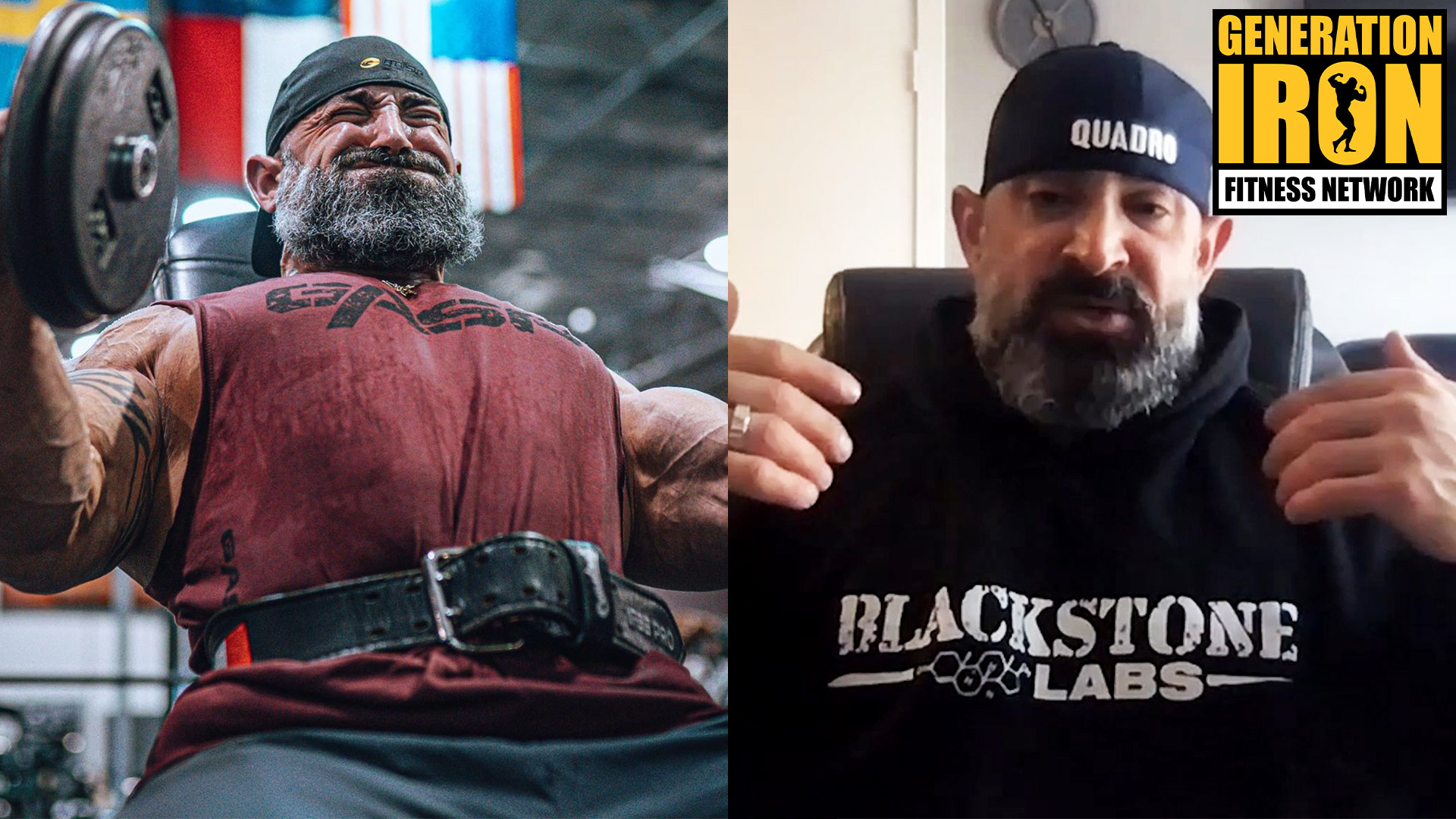
Guy Cisternino: Why You Shouldn’t Worry About Heavy Weight vs Light Weight Training
[embedded content]
Guy Cisternino shares some wisdom as to why people should stop worrying about free weights vs machines or heavy weight vs light weight.
A common question that comes up when people are looking for bodybuilding advice is what generation training style they should focus on. Is it better to do more free weights or more machine exercises? Is it best to do heavy weight and low volume or light weight and high volume? Guy Cisternino is someone who has been notoriously known for his hardcore heavyweight training. But surprisingly, he gives a different kind of advice when it comes to these general questions. In our latest GI Exclusive interview, Guy Cisternino explains why you shouldn’t worry about free weights vs machine or heavy weight vs light weight training.
In one of our previous interviews, Guy Cisternino talked about how Branch Warren was his biggest inspiration. The reason for this was due to his hardcore passionate training style. It’s how Cisternino himself loves to train. He worries that not enough young people still have that hardcore passion in the gym anymore.
But that hardcore style of training has less to do with what is successful for bodybuilding and more to do with the culture. While Guy Cisternino loves to train hardcore – he also understands it is not necessary to be a massive shredded bodybuilder. Rather than it being a necessity for success – he simply sees it as a cultural passion that excites him. He likes that attitude and that atmosphere.
That’s why when we ask him whether or not heavy weight vs light weight matters. Or whether or not free weight vs machines matter – his answer is more open minded. Guy Cisternino has been through some injuries and is now a slightly older (but not old) bodybuilder. He hooked up with John Meadows as his trainer more recently – and Meadows changed up the kind of training he does in light of his age and injuries. What Cisternino learned through this process changed his perception on what is important in bodybuilding training.
To Guy Cisternino, it matters less whether or not you do machines vs free weights or heavy weight vs light weight. Instead, it matters more how you break up your body parts and how much focus you put into each workout. Yes, there are little differences – pros and cons to each approach – but ultimately they are not game changers. Whether you lift heavy weight or hight weight or free weight or machines – you can be a successful and massive bodybuilder with any of these approaches. What matters more is how you do these tactics and the way you break up each body part throughout your week of training.
What he means by this is that by changing up how you break up the body parts you work in a given workout – you can be saving your joints from too much pressure in one session. This can save you injury, wear, and tear in the long run. So someone like Guy Cisternino can train hardcore to his liking with less risk (though still there is always risk) of injury. This provides longevity. So you can be like Dexter Jackson or you can be like Branch Warren.
Both of these bodybuilders are legendary in their own right and they both used vastly different techniques – but if you break up the body parts right, you can extend your longevity as an athlete.
You can watch Guy Cisternino go into full detail in our latest GI Exclusive interview segment above!

Bodybuilder And Actor Mike Mitchell Has Died Of A Heart Attack
Mike Mitchell, known as a bodybuilder and for his part in ‘Braveheart’, passed away of a heart attack in Turkey.
Mike Mitchell, a bodybuilding champion turned actor, has passed away at the age of 65 of a heart attack. Mitchell died on a boat in Turkey of what was believed to be natural causes. Later, a rep of Mitchell’s told TMZ that a heart attack was the cause.
In a statement, the rep described Mitchell as a “true friend” and “honest person.”
“It was very hard to believe … The sudden death of an international actor we managed, an honest person, a real actor, a true friend, my dear friend, has saddened us deeply. I’ve always been honored to be your manager. I wish patience to you wife, dear Denise Mitchell, and your children. Getting to know you and gaining your friendship is invaluable. Sleep in the lights. RIP.”
Mike Mitchell made a name for himself as a bodybuilder. The Scottish star got started in fitness at an early age and showed off his tremendous size on the biggest stages. Mitchell totaled five Masters Mr. World titles and two Mr. Universe titles with the World Fitness Federation. He also competed in many strongman competitions including Britain’s Strongest Man contest.
During his prime in bodybuilding, Mike Mitchell gained attention due to his incredible size and this landed him some on-screen movie roles. Mitchell is known for his parts in Braveheart and Gladiator. Mitchell has worked with the likes of Mel Gibson, Russell Crowe, and Joaquin Phoenix. He also appeared in One Day Removals, City of Hell, and Skyfall, among others.
Mitchell suffered a setback when he had a heart attack that forced him to take a break after winning his fifth World Fitness Federation title in 2006. In 2010, Mitchell was inducted into the WFF Hall of Fame and given the “Living Legend Award,” which is an extremely prestigious honor.
Mike Mitchell’s love of sailing and the sea began at a young age. At 16 years old, he served in the British Armed Forces and eventually became a part of the Elite special Forces unit. When he left to work in the offshore oil industry, Mitchell started deep-sea diving. He was a fan of sailing and continued to do so in between his bodybuilding and acting careers.
Mike Mitchell is survived by his wife, Denis, and children. He was immensely talented in many areas and grew to be a legend in the sport of bodybuilding.
Generation Iron send out condolences to the friends and family of Mike Mitchell during this difficult time. For more news and updates, follow Generation Iron on Facebook, Twitter, and Instagram.
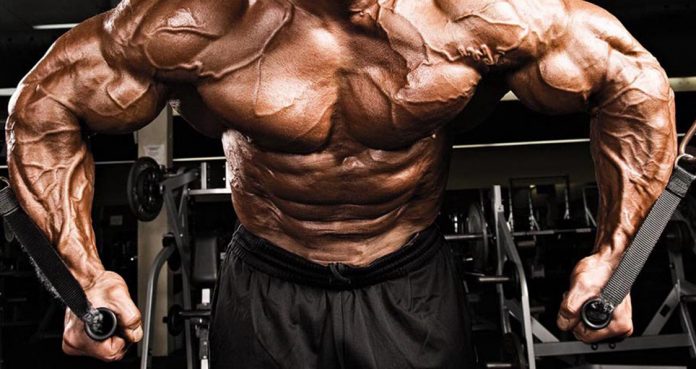
The 5 Best Machines For Getting Shredded
The 5 Best Machines For Getting Shredded
With the evolution of bodybuilding, researchers have come up with ways to speed up the process of gaining muscle mass with the help of better nutrition and advanced training techniques. Over the years machines used in the gyms have gotten better.
Using machines can help you achieve your desired results while preventing injuries. Many bodybuilders use machines while preparing for competitions to avoid injuries. Machines are great for beginners as they limit the range of motion and avoids recruiting muscle stabilizers.
These are the 5 Best Machines
1. Cable Crossover Machine
Cable crossover station is one of the most important equipment in a gym. You can do a variety of exercises targeting different muscle groups on this machine. If your gym doesn’t have a cable crossover machine, you should start looking for a new gym.
Using cables has a different effect on your muscles as compared to using free weights. You have constant tension on your muscles during the eccentric and concentric movement while using the cables.
2. Smith Machine
Smith machine is another gym essential. It is a great equipment for people who can’t perform exercises like the bench press or squats due to problems like joint pains. The smith machine avoids recruiting secondary muscle groups as your path of motion is fixed.
The smith machine is great at developing your lagging muscles as it limits your movement. Let us say you have a overdeveloped glutes and weak quads. You can eliminate your glute recruitment and focus entirely on your quads by placing your feet in front of you.
3. Pec Fly Machine
The pec deck machine is nearly as effective as the bench press in activating the pectoralis major. Using the pec fly machine will help you in maintaining constant tension on your inner chest. This machine is a must for people who want striations and separation in their chest.
You can also work your rear delts on the pec fly machine. Sit with your chest against the pad to target your rear deltoids. Rear delts are a weak muscle group for most people. They make it even worse by not training them often.
4. Leg Press
You will hardly see a gym without a leg press machine. The leg press machine can help you in building muscle mass and strength in your lower body. The leg press also happens to be one of the most abused machines in a gym.
Many people load the machine with more weight than they can handle. You will see the best results while using the leg press machine by following a full range of motion. Excessive weight puts stress on your lower back and can result in an injury if you fail a rep.
5. Hammer Strength
Hammer strength is one the best equipment for training your chest. The hammer strength is incredibly effective for people who can’t bench press for some reason. Pros use this machine while preparing for a contest or during muscle rehab.
You target the same muscles while using the hammer strength as you do during the bench press. As you are in a leveraged position, you can use heavier weights on the hammer strength as compared to the flat bench press.
Which is your favorite machine?
Let us know in the comments below. Also, be sure to follow Generation Iron on Facebook and Twitter.
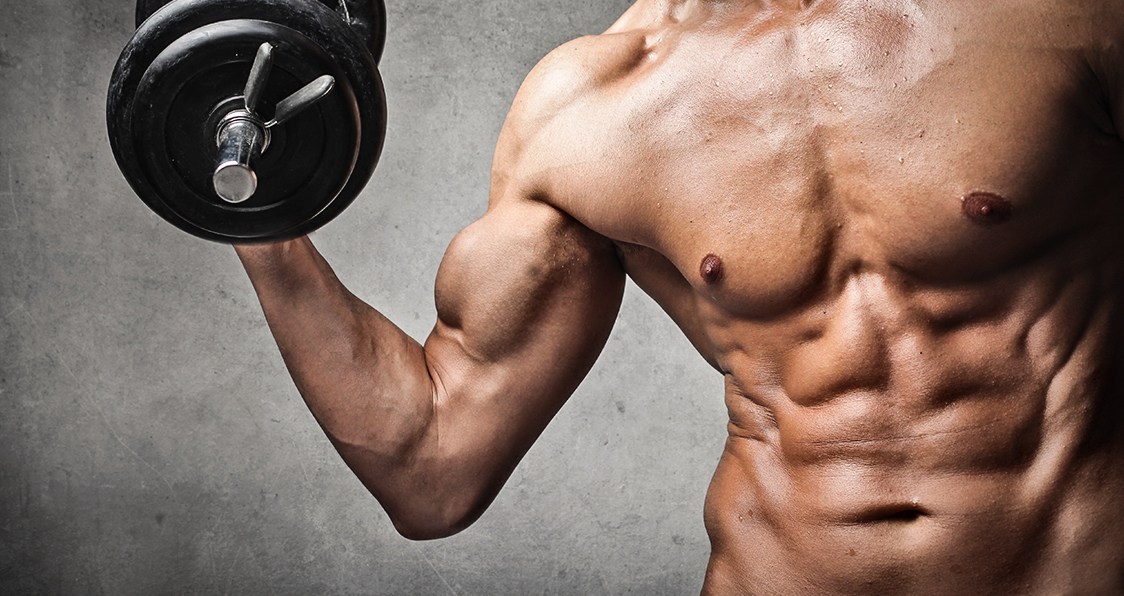
The Secret To Overload Training
Time to push your training over the edge and into the next level.
When your typical training routine just isn’t cutting it, you can always count on Generation Iron to bring you something to freshen things up a bit. Overload training is a great method to get some gains without just completing the typical three sets of ten reps basic program. Overload training is great for building strength and putting on mass as well. Overload training forces your body to get used to the increased effort and stress you put your body through in order to increase hypertrophy. But how exactly do you go about overload training? We’ve got you covered.
1. Form and ROM
First thing’s first. When it comes to overload training you have to make sure your technique is in tip top form. Things like form and rang of motion don’t really sound sexy, but neither do the words slipped disk. Injury is the enemy of gains and if you want to to make some you’re going to have to get your technique down when it comes to lifting. Once you’ve perfected the mechanics of a lift then practicing to obtain full range of motion will be the next priority. This will enable you to attack a muscle group from all different angles and activate all the muscle fibers you’re looking to attack.
2. Increase Volume
Once your form is clean then the logical next step is to increase the amount of reps and/or sets. By now your body has gotten used to the weight that you’ve been hauling. The pump that you used to experience has slowly begun to fade away and you’re feeling like you’ll never experience it again. Don’t put down those weights quite yet. Up the volume on your lifts and you’ll find yourself not only experiencing hypertrophy, but building strength and muscle endurance as well.
3. Increase Weight
You can’t just rely on increasing your reps to get bigger. There’s going to come a time when you’ll have to up the weight you’re lifting. But this doesn’t mean you should go from 75 lbs dumbbells to 200 lbs. Instead you’ll be lifting a higher amount of weight and decreasing the volume. Say you’re pushing 225 lbs on the bench for 10 reps, increase the weight to 250 lbs and perform 8 reps. Then up it to 275 lbs and 6 reps and so on until you reach your one rep max.
4. Intensity
It’s gotta be said. If you want to see some major changes in your physique then you’re going to have to train hard. The intensity of your workout has a part to play in the amount of muscle you’ll pack on from training. This is where the form, the increased volume, and increased weight comes into play. Combining all these factors as well as performing the same amount of reps/sets in a shorter time or a greater amount of reps in the same amount of time for an average lifting regimen will in affect make for a more intense workout.
5. Frequency
The amount of time you work a muscle group per week is also important to getting the full benefit from overload training. If you’re one of those hit the gym three times a week kind of guys then you’re going to have to change things up for overload training. Get in the gym five days a week so that you’re constantly training a muscle group on each day of the week. There’s nothing better than consistency when it comes to training.
What are your thoughts on overload training? Let us know in the comments below and be sure to follow Generation Iron on Facebook and Twitter.

IFBB Zhanna Rotar Pro 2021 Results
Complete results from the IFBB Zhanna Rotar Pro 2021.
The IFBB Zhanna Rotar Pro 2021 took place on Saturday, July 24 at the Anaheim Convention Center in Anaheim, CA. This was the site of a competition that handed out some qualifications for the 2021 Mr. Olympia, which will take place Oct. 7-10 in Orlando, FL.
This competition is named after Zhanna Rotar, who passed away in December after being involved in a vehicle accident. Rotar had a passion for nutrition and this carried over into a career in fitness. She began competing in 2000 and earned her pro card in 2005.
The Zhanna Rotar Pro 2021 was a small style competition but there was plenty to watch and a lot on the line for competitors. Check out our full breakdown of the results below.
Results Breakdown
Generation Iron wishes to congratulate all the great athletes who earned a win at the IFBB Zhanna Rotar Pro 2021 and qualified for a spot in the Olympia. Make sure to check out our full IFBB Pro results page from this year and previous years right here to catch up on any action you may have missed!
Classic Physique
First Place – Desiree Alferes
Second Place – Anca Bergen
Third Place – Jill Braxmeyer
Fourth Place – Kim Clark
Fifth Place – Rachel Cuccia
Sixth Place – Esmeralda Diosdada
Seventh Place – Karina Grau
Eighth Place – Jessica Heath
Ninth Place – Ashley Howells
Tenth Place – Spomenka Miller
Generation Iron wishes to congratulate all the great athletes who earned a win at the IFBB Zhanna Rotar Pro 2021. Make sure to check out our full IFBB Pro results page from this year and previous years right here to catch up on any action you may have missed!
Greg has covered the four major sports for six years and has been featured on sites such as Sports Illustrated, Fox Sports, SB Nation, NJ.com, and FanSided. Now, he is transitioning into the world of bodybuilding and strength sports.
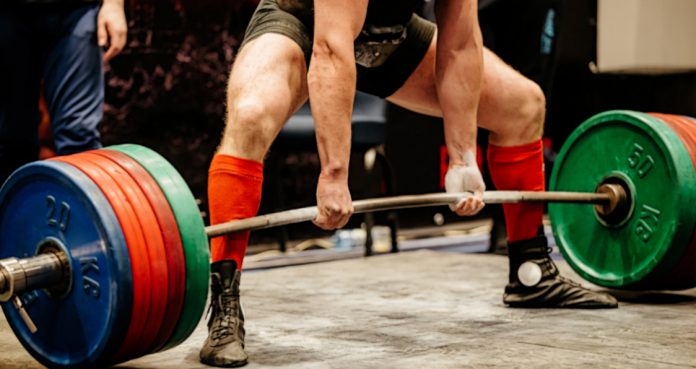
4 Reasons You Should Have Olympic Lifts In Your Bodybuilding Routine
Olympia meets Olympics.
Bodybuilding is all about hypertrophy. Building muscle is the reason for exercise after all and that means working your muscles hard until they experience hypertrophy. This, of course, promotes growth. Because a dedicated bodybuilder is going to want their entire body to be proportionate – that means working multiple muscle groups with a number of different exercises that will ensure the overall package is well defined.
But despite shaping an aesthetic physique bodybuilding does little in the way of increasing your overall strength. As an athlete, a bodybuilder should want to make improvements to more than just their physique. For that reason, adding some Olympic lifts to your routine is a great way both improve your strength as well as gain muscle.
While many people will say that Olympic lifters don’t look all that impressive physically, particularly when compared to a bodybuilder, the fact is that they possess great strength and can in fact build a great amount of muscle depending on how they train. The reason many Olympic lifters don’t have a godly physical appearance is because they’re focused on technique and improving the specific Olympic lifts. Usually they just want to get the bar up by performing either the snatch or the clean and jerk, both movements emphasizing strength, explosion, and speed. Because of this, the time they spend under tension is limited to a few seconds at best. Undergoing hypertrophy means having increased time under tension to really tax the muscle and get them to grow.
Despite that fact, you should definitely try adding the Olympic style training to your routine. But why you ask? Well, here’s a list of reasons on how you’ll see some drastic improvements.
Provides cardiovascular training
The explosive movements you must utilize in order to lift the bar from the ground during your training is much the same as sprinting. The distance of the bar movement while performing the Olympic lifts, several feet from floor to over head, means utilizing more of the body’s core mechanics, the same you’d use if you were running on a track. Compared that to lifting a dumbbell and you’ll see which requires more cardiovascular strength.
It’s a total body workout
Olympic lifts are also a great tool for getting a total body workout. You can’t just perform the snatch and clean and jerk and call it a day. Olympic style training requires you to have good fundamentals in the deadlift and the front and back squats. You’ll be training those lifts along with the Olympics lifts which will ensure your entire body is being worked.
The increased strength and explosion
This should be a no brainer. Having increased strength and explosion in your lifts will easily translate over to improvements in all your lifts. That includes bodybuilding staples like the bench, squat, and the deadlift. Training the Olympic lifts means overall performance gains.
Easy to add to a routine
The movements can easily be added to any of the routines you do in the gym. It can be added at the beginning or the end of your training session. If done correctly they can be great for crashing through a plateau or just generally improving your abilities. Try a light form at the beginning of your workout for a great warm up or at the end to thrash an already taxed body.
Do you have Olympic lifts in your routine? Let us know in the comments and forums. Be sure to follow Generation Iron on Facebook and Twitter.

How To Get A Six-Pack (Post Pandemic Edition)
A complete guide to sculpting the perfect six-pack abs
Crafting a six-pack is hard. Anyone who tells you otherwise is lying. We wish getting a six-pack was as easy as grabbing a six-pack of beer from a store. Also, we think the alcoholic beverage companies are playing a practical joke on us. Or do they want it to act like a reminder that a six-pack of beer will never let you have six-pack abs? You be the judge.
The pandemic has been rough, especially for fitness enthusiasts. The mayhem that the coronavirus caused put us in an unexpected situation. Who would have thought we would be locked in our houses for months on end. The lockdown situation didn’t bode well for our bodies either.
While we did see the WFH culture take on a new life last year, it didn’t translate the same way for the fitness scene. The reason behind it is not so hard to figure. People have a motivation to work – money, but the same doesn’t always apply to fitness.
Ways To Build A Six-Pack After The Pandemic
Now that most of us have started training at gyms again, it’s time to create a blueprint for achieving our dream physiques. Washboard abs are a result of optimal training, nutrition, and recovery programs. Falling off in any of these can throw you off track.
Read also: 5 Gym Habits You Should Follow Post COVID
If Cap’n Crunch is the first thing that comes to your mind when someone mentions crunches, you know you have some work to do. In this article, we will help you build a six-pack from scratch. Even if you’re a fitness newbie or an advanced lifter, you’ll take something away today.
1. Diet
Remember: Abs are made in the kitchen and crafted in the gym. You shouldn’t expect to build a chiseled midsection while feasting on burgers every other day. Your first step towards a six-pack should be to get your diet in order.
Your diet plan will vary depending on your current body fat percentage and the excess weight you need to shed. Everyone has abs, but most of us love them so much that we have them protected under a layer of fat.
Switch to a calorie deficit diet – meaning you need to be burning more calories than you’re consuming. Since you were in your house for a big chunk of the year, you could be running a calorie surplus.
How to Design Your Diet Plan:
Use A Calorie Tracking App – Apps like MyFitnessPal and HealthifyMe are great for logging your daily food intake. You should log your meals for at least a week before checking your average daily calorie and macronutrient intake and breakdown.
Find Out How Many Calories You Need – There are many online calculators which will tell how many calories you need to be eating based on your age, height, weight, and gender. Use this calculator to find your daily calorie intake goal and this for the macronutrient goals.
Choose Your Food – Wisely – Some people make designing a diet plan sound harder than it is. After you know how many calories you need to be eating every day, you should begin putting down food items that meet your goals in a planner. The apps mentioned above have an extensive list of food items with different nutrient values. Selecting foods that fit your lifestyle is very crucial. You don’t want to add food items to your list that are too exotic or expensive.
Follow The Diet Plan – Might sound basic, but following the program can be the roughest part of dieting.
2. Training
Most people are never able to build a six-pack because they stick to vanilla ab workouts. If a few crunches and sit-ups are your idea of an ab workout, you shouldn’t even bother starting.
Break down your midriff training into sections. Your workouts should consist of different exercises to train your upper, middle, and lower abs. Oblique training is another overlooked aspect of core training. Follow the workouts mentioned below to take your abdominal to the next level.
Workout 1
Hanging Leg Raises – 3 Sets 20-30 Reps
Cable Crunches – 3 Sets 20-30 Reps
Planks – 3 Sets 1 Minute-Each
Mountain Climbers – 3 Sets 20-30 Reps
Jumping Jacks – 3 Sets 1-Minute Each
Workout 2
Flutter Kicks – 3 Sets 30-40 Reps
Alternating Leg Lowers – 3 Sets 30-40 Reps
Side Planks – 3 Sets 1-Minute Each
Glute Bridge March – 3 Sets 30-40 Reps
High Knee Running – 3 Sets 1-Minute Each
Workout 3
Lying Windshield Wipers – 3 Sets 20-30 Reps
Crunches – 3 Sets 30-40 Reps
Superman Planks – 3 Sets 90-Seconds Each
V-Ups – 3 Sets 30-40 Reps
Burpees – 3 Sets 2-Minutes Each
Workout 4
Russian Twists – 3 Sets 30-40 Reps
Ab Wheel Rollouts – 3 Sets 10-20 Reps
Push-Up Planks – 3 Sets 90-Seconds Each
TRX Mountain Climbers – 3 Sets 30-40 Reps
Squat Jumps – 3 Sets 2-Minutes Each
Workout 5
Stability Ball Knee Tucks – 3 Sets 30-40 Reps
Barbell Oblique Twists – 3 Sets 30-40 Reps Each Side
Planks Pulses – 3 Sets 1-Minute Each
Jackknives – 3 Sets 30-40 Reps
Jump Rope – 3 Sets 2-Minutes Each
Training Frequency
Many fitness newbies make the mistake of training their abs every day. You don’t need to spend hours working on it. An intense 30-minute session is enough to get the job done.
Cardio (HIIT)
Cardio sessions are a must if you want a midsection that the Greek Gods approve. You should program a HIIT cardio session at the end of every resistance workout. Also, if you want a six-pack, forget rest days. Active rest days are the closest you get to no physical activity.
3. Recovery
Since your midsection is a small muscle group, it needs time to recover from brutal workouts. As a rule of thumb, don’t train your abs if they are sore. And, if you are training your abs more than thrice a week – you are doing too much.
Some ways of improving your recovery after workouts:
Drink at least a gallon of water every day.
Never miss a post-workout meal.
Use a post-workout supplement if you need it.
Wear compression clothing.
Warm-up before weight training.
Cool-down post workouts.
Make foam rolling and stretching a part of your training routine.
Take a cold shower.
Conclusion
If you had a ripped midsection before the onset of the pandemic, you have a headstart. Your muscle memory is going to help you get back in shape in no time. On the other hand, newbies should stick to the workout, diet, and recovery programs for a minimum of six months before expecting any results.
How often do you train your abs? Let us know in the comments below. Also, be sure to follow Generation Iron on Facebook and Twitter.
